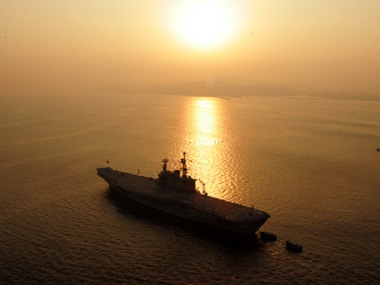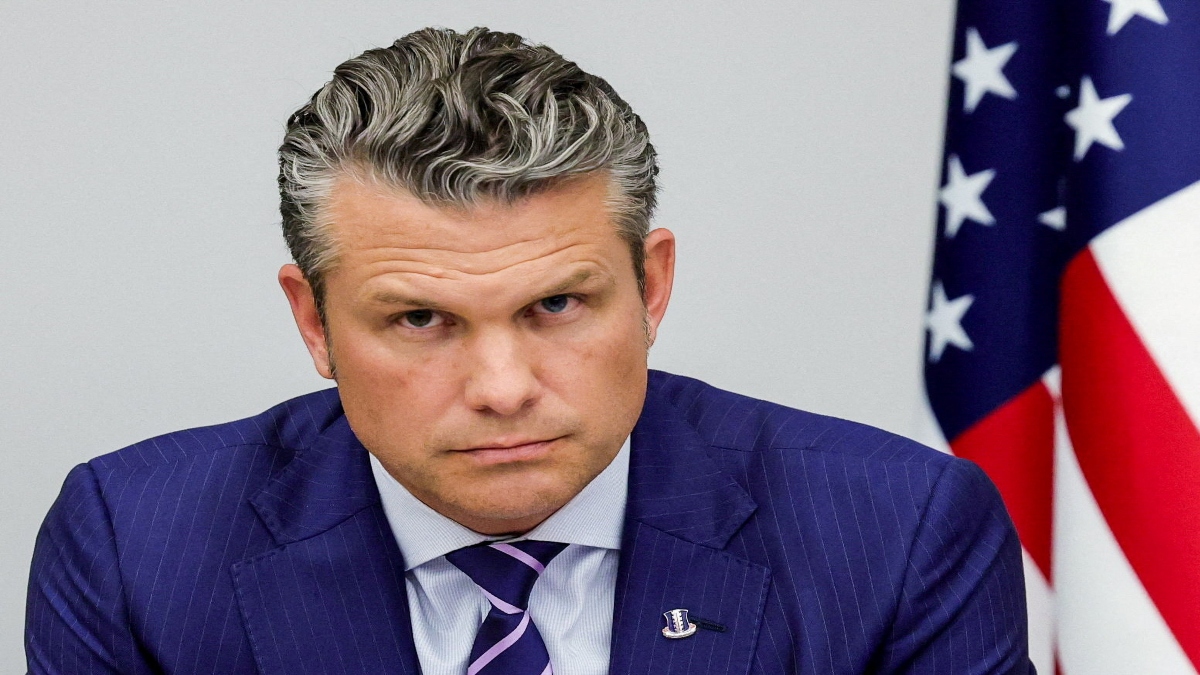Two questions are worth asking in the wake of the decommissioning of one of the two aircraft carriers of the Indian Navy – INS Viraat (the oldest of its kind in the world) – on 6 March at the Naval Dockyard in Mumbai: One, is an aircraft carrier that costs billions of dollars needed for a nation’s security, particularly for a developing country like India? Two, if there is, indeed, a need, how many of such carriers should India possess? The first question is highly relevant given the fact that the number of countries possessing active aircraft careers and developing new ones has become fewer and fewer over the years. 50 years ago, there were 14 nations which operated aircraft carriers. According to a latest estimate, that number has come down to eight. Countries such as Australia, Argentina, Brazil, Canada, Japan and Netherlands have decommissioned their carriers. The Royal Navy of the United Kingdom, which controlled the waves of all the Oceans in the previous century, does not have a single active carrier today, though it is constructing two at the moment. Russia, still a super power in military terms, has only one active carrier; it is also constructing one more at the moment. The United States has the largest number of active carriers presently, at 10, with two more under construction. China has only one (but a very poor one in terms of technology and capacity), but it is constructing one more. [caption id=“attachment_3323970” align=“alignnone” width=“825”] The Indian Navy’s aircraft carrier INS Viraat is anchored at sea in Visakhapatnam. Reuters[/caption] Obviously, one of the important reasons behind countries forgoing carriers is the growing economic pressure. For instance, when India acquired the remodelled Gorshkov in Admiral January 2014 from Russia and rechristened it as INS Vikramaditya, it cost $2.3 billion. But that was not all. India had to pay Russia another $2 billion for 45 MiG-29K fighters, that will be operating from the carrier. In fact, the cost becomes all the more higher, when one takes into account the helicopters, bombers, supporting ships, missiles, bombers and highly sophisticated electronic equipment that accompany a carrier at all times. In other words, a carries is simply not a big platform on the sea, it is a highly integrated ‘floating town’ having short runways from which the fighter aircraft can land and take off. It is a ubiquitous fighting system that has enhanced combat power, with extended reach and rapid response capability. Besides, critics point out that the “leviathan” that a carrier is has a very soft underbelly, that is becoming increasingly vulnerable to attacks from missiles and submarines, with little chances of sustaining the damage and surviving. In other words, there are doubts over an aircraft carrier’s relevance in the ever changing battle-space of modern warfare. Is it then not a helpless ‘prima donna’, occupying the centre-stage at sea, that needs protection at all times? This is a familiar question one often encounters from Air Force officers, who suggest that more investments in the country’s Air wing, instead of spending billions on carriers, will yield better results in providing air-protection to the Navy’s assets in the sea. However, both the above arguments against the aircraft carriers need to be taken with a pinch of salt. All told, in every major conflict that the world has seen in the last 70 years – whether it is Vietnam or Falklands – aircraft carriers have played a major role. India is a major maritime power having lots of stakes in the Indian Ocean region. An aircraft carrier is the most effective means available today of ensuring sea control, stakes that are not only military in nature (threats from China and Pakistan and dangers of piracy, particularly in the region stretching from the Horn of Africa in the west to the Straits of Malacca in the east) but also economic-driven (keeping sea-lanes free and open as our trade is essentially sea-driven; there are maritime resources under the sea in our exclusive economic zone; protecting the interests of Indians working in almost all the important countries in Australasia, Southeast Asia, West Asia and Africa). In other words, a rapidly rising India must have peaceful and secure seas around it by projecting its ‘power’. In military parlance, it is called “sea control”. And nothing ensures sea control better than an aircraft carrier. In fact, India’s 2009 Maritime Doctrine clearly stipulates that, “sea control is the central concept around which the Indian Navy is structured, and aircraft carriers are decidedly the most substantial contributors to it.’’ The carriers, with a group of accompanying frigates, destroyers and submarines, provide an image of absolute naval dominance of the high seas and thus projects the overall power of the country. And this power projection cannot be quantified in terms of money; the overall accrual to the national power far outweighs the monetary costs. [caption id=“attachment_3323974” align=“alignnone” width=“825”]
 India’s Indigenous Aircraft Carrier P-71 “Vikrant”. Reuters[/caption] In regard to the factor of vulnerability, no weapon-system or platform has ever been immune to challenges in human history. And yet, the fact remains that aircraft carriers, with improved technologies, have not only survived but also remained a step or two ahead of threats of ballistic missiles, counter-measures and obsolescence. In fact, the last carrier that was sunk was way back in 1945 – the USS Bismarck Sea (US Navy) that sank with 318 men onboard when it was hit by two Japanese kamikazes. Carriers today are capable of neutralising hostile ships, aircraft and submarines before they become a threat. In fact, a launch of a weapon against any carrier can be instantly detected, intercepted and destroyed at some point in its ballistic trajectory. As it is, an aircraft carrier can move over 600 km a day, which translates to over one million square nautical miles of ocean area which an adversary has to search. By every means, it is a Herculean task. In any case, given its sheer size, build philosophy and damage control features, an aircraft carrier has an amazing capacity to absorb damage. That is why the Indian Navy has a point when it points out that it cannot remain behind its comparable friends, allies and rivals with aircraft carriers. The US alone has 10 of the 18 aircraft carriers in service with various navies, across different oceans. Now let us move on to the second question: How many carriers should India have? It may be noted that the Indian Navy has been operating aircraft carriers continuously since 1961. With the decommissioning of INS Viraat, India at the moment has only one – the 45,000 ton Vikramaditya. However, the 40,000 ton INS Vikrant (formerly Project 71 Air Defence Ship or Indigenous Aircraft Carrier) is under construction at the Cochin Shipyard. It is an indigenous carrier that is likely to be commissioned in 2018. Then there is INS Vishal (IAC-II), the second Vikrant-class aircraft carrier, which is currently in its design phase and will be built by Cochin Shipyard for the Indian Navy. It is intended to be the first super carrier to be built in India, with an increase in displacement and proposals to incorporate nuclear propulsion. Supposed to join the Navy in 2025, this super carrier will weigh 65,000 tons and will be about 300 metres long to host a notional air wing of at least 50 aircraft: 35 strike fighters, three airborne early warning (AEW) platforms, eight anti-submarine warfare (ASW) and utility helicopters, and four support aircraft, aerial tankers, or electronic warfare (EW) platforms. It is expected to be capable of speeds greater than 30 knots (56 km per hour). However, in designing this super carrier, India has sought the help of major global shipbuilders and this “help” includes the possibility of technological collaborations. The United States, it is said, is very keen for such collaborations. In fact, the two countries have already held talks in this regard under the banner of ’the India-US joint working group on aircraft carrier technologies.’ In other words, going by the available official literature, India is going to have three operational aircraft carriers by 2030. But senior officials say privately that the ideal number should be six – five in active duty and one in reserve – to be used in rotation, given that the country has a large coastline and maritime interests that are dependent on safety and security of arguably the world’s most important shipping artery running through the Indian and Pacific Oceans.
India’s Indigenous Aircraft Carrier P-71 “Vikrant”. Reuters[/caption] In regard to the factor of vulnerability, no weapon-system or platform has ever been immune to challenges in human history. And yet, the fact remains that aircraft carriers, with improved technologies, have not only survived but also remained a step or two ahead of threats of ballistic missiles, counter-measures and obsolescence. In fact, the last carrier that was sunk was way back in 1945 – the USS Bismarck Sea (US Navy) that sank with 318 men onboard when it was hit by two Japanese kamikazes. Carriers today are capable of neutralising hostile ships, aircraft and submarines before they become a threat. In fact, a launch of a weapon against any carrier can be instantly detected, intercepted and destroyed at some point in its ballistic trajectory. As it is, an aircraft carrier can move over 600 km a day, which translates to over one million square nautical miles of ocean area which an adversary has to search. By every means, it is a Herculean task. In any case, given its sheer size, build philosophy and damage control features, an aircraft carrier has an amazing capacity to absorb damage. That is why the Indian Navy has a point when it points out that it cannot remain behind its comparable friends, allies and rivals with aircraft carriers. The US alone has 10 of the 18 aircraft carriers in service with various navies, across different oceans. Now let us move on to the second question: How many carriers should India have? It may be noted that the Indian Navy has been operating aircraft carriers continuously since 1961. With the decommissioning of INS Viraat, India at the moment has only one – the 45,000 ton Vikramaditya. However, the 40,000 ton INS Vikrant (formerly Project 71 Air Defence Ship or Indigenous Aircraft Carrier) is under construction at the Cochin Shipyard. It is an indigenous carrier that is likely to be commissioned in 2018. Then there is INS Vishal (IAC-II), the second Vikrant-class aircraft carrier, which is currently in its design phase and will be built by Cochin Shipyard for the Indian Navy. It is intended to be the first super carrier to be built in India, with an increase in displacement and proposals to incorporate nuclear propulsion. Supposed to join the Navy in 2025, this super carrier will weigh 65,000 tons and will be about 300 metres long to host a notional air wing of at least 50 aircraft: 35 strike fighters, three airborne early warning (AEW) platforms, eight anti-submarine warfare (ASW) and utility helicopters, and four support aircraft, aerial tankers, or electronic warfare (EW) platforms. It is expected to be capable of speeds greater than 30 knots (56 km per hour). However, in designing this super carrier, India has sought the help of major global shipbuilders and this “help” includes the possibility of technological collaborations. The United States, it is said, is very keen for such collaborations. In fact, the two countries have already held talks in this regard under the banner of ’the India-US joint working group on aircraft carrier technologies.’ In other words, going by the available official literature, India is going to have three operational aircraft carriers by 2030. But senior officials say privately that the ideal number should be six – five in active duty and one in reserve – to be used in rotation, given that the country has a large coastline and maritime interests that are dependent on safety and security of arguably the world’s most important shipping artery running through the Indian and Pacific Oceans.
Is an aircraft carrier that costs billions of dollars really needed for a nation’s security, particularly for a developing country like India?
Advertisement
End of Article


)

)
)
)
)
)
)
)
)



